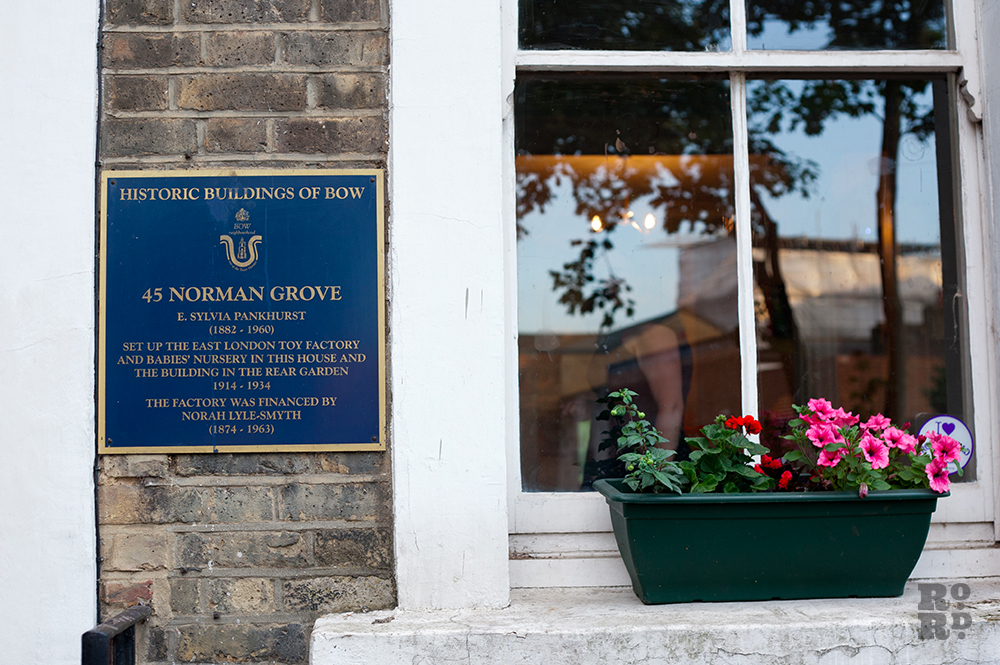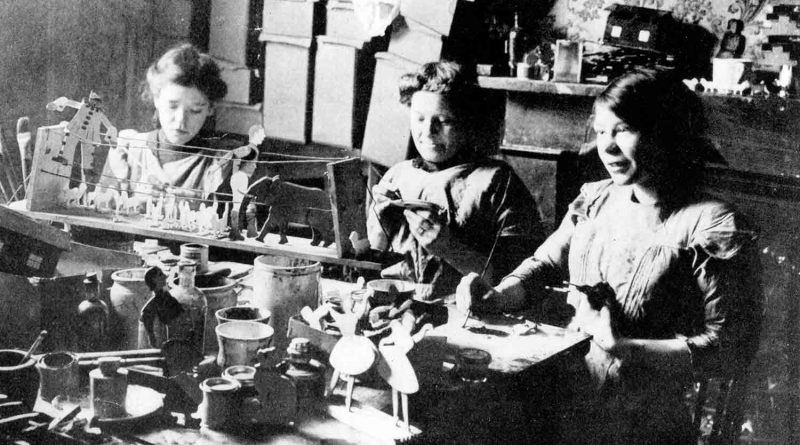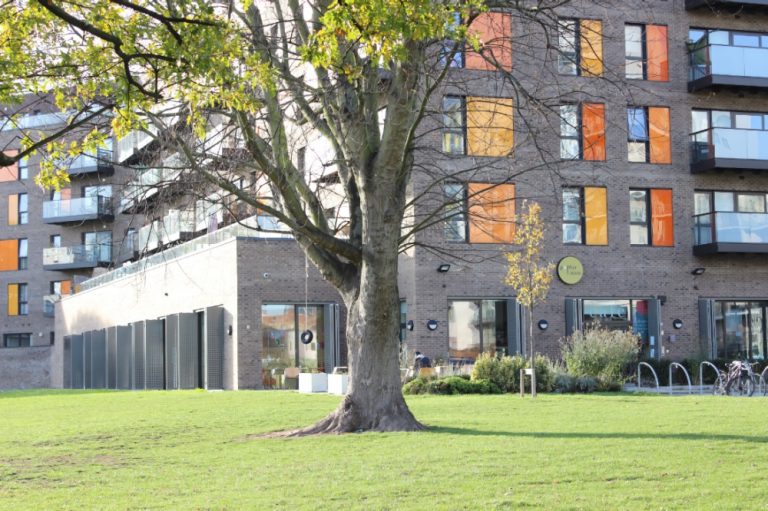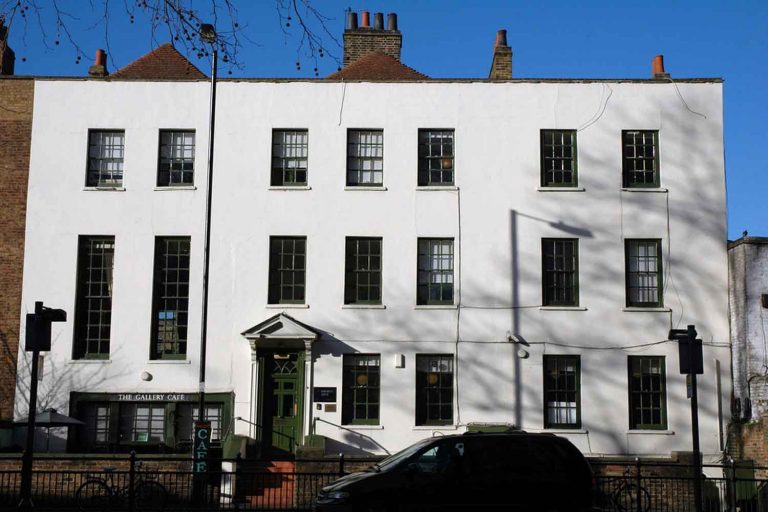Sylvia Pankhurst and the East London Toy Factory
Sylvia Pankhurst is well known around these parts. Most know of her activism for women’s suffrage. However, many don’t know about her other efforts to help ease East London poverty and hardship. One of these, The East London Toy Factory, was opened by Sylvia Pankhurst and the Federation of Suffragettes and ran from 1914 to 1934.
Pankhurst was part of The Women’s Social and Political Union (WSPU) when she moved to Bow in 1912, leading the WSPU East End campaign. The WSPU, led by Emmeline Pankhurst, had a central focus on securing the vote for women, abandoning all other social reforms in their wake. Yet when Sylvia came to Bow, she was deeply affected by the sight of women struggling with poverty. These were women who weren’t thinking of the vote, but of how to make it through the month. They weren’t campaigning because they were juggling work and feeding their children, facing local struggles that wore them down daily.
She recognised that the vote alone was not going to help these women – that social reforms must come on together. It was later, when she was part of the East London Federation of Suffragettes (ELFS), which focused not solely on the vote but also on many other local, pressing women’s issues, that she was able to help East London women.
Within weeks of the outbreak of World War One, many of the East End factories were closed. Unemployment rose and there were hundreds of cases of deep poverty and starvation. People arrived at the Suffragette’s Woman’s Hall seeking help, and this forced the Federation to adopt new strategies. People were starving, and with men being enlisted and leaving or being laid off, many families had to sell their belongings for food, or were thrown out of their homes.
The Toy Factory
Sylvia Pankhurst opened the East London Toy Factory in October 1914 on 45 Norman Road. Germany was the leading toy manufacturer at the time and this left a gap in the market which the Federation were able to fill. They felt this was the perfect opportunity to combat unemployment and to help these women, suddenly left with five or so children to feed and no money for milk, to make a proper living. While there were other projects offering women and girls work, the Toy Factory paid a minimum wage of 5d an hour, or £1 a week. That was the same as men’s minimum wage at the time.
In contrast to other possible lines of work, the toy factory taught its workers the trade too. A German toymaker from the local area, H. Niederhofer, came to the factory to teach toy-making. Many employers fired their German employees around this time, due to fears over anti-German mobs affecting their business. This was what George Lansbury, the toymaker’s previous employer, most likely feared having Niederhofer on his timber yard.
Sylvia’s friend Amy Browning from the Royal College of Art would also help out, coming into the factory on Saturday afternoons to teach the women drawing and painting. The toy makers were encouraged to design their own toys, and if they produced something great then the factory would buy it and paid them a royalty. The factory was financed by Norah Smyth, the suffragette photographer of Dreadnought, the ELFS newspaper.
The first toys were simple flat animals, made of wood from the Lansbury timber yard. But eventually they became more detailed and modern. In 1915, they had all kinds of jointed wooden animals, including pigs, birds, elephants, squirrels, dragons, fairies, and little girl guides and boy scouts.
They did stuffed animals and wax-headed baby dolls. Quite progressive for the time, they didn’t just do white baby dolls but instead included a ‘Japanese’ baby and black ‘African’ baby doll. Considering other doll manufacturers have had an ongoing struggle with making more diverse dolls, this is particularly impressive to see pre-World War One.
At toy fairs and throughout London these toys became incredibly popular. Even the new store Selfridges, in Oxford Circus, started stocking them. Rumour had it that it was Sylvia Pankhurst herself who took the toys down in a taxi, and convinced Gordon Selfridge.
According to Voices from History: East London Suffragettes by Sarah Jackson and Rosemary Taylor, while Pankhurst was in prison in 1921, the factory was managed by Mrs. Regina Hercbergova. Despite no longer being under the control of the Federation, the Toy Factory stayed in business, at that same location, until 1934. After that it moved to Central London and was renamed, ‘Ealontoys’. Unfortunately, it didn’t survive the second world war as it did the first, and its final staff member was killed by a bombing in 1943, leaving the factory abandoned.
However, in its prime in WWI, the toy factory was both incredibly progressive and successful. The East London Federation of Suffragettes also opened a nursery attached to the factory. This meant that women could leave their children there for 3d a day, from 8am-7pm, and have them fed three meals, while they could work. This, too, shows how ahead of the times the establishment was. The nursery attached to the Toy Factory was so popular that a second larger one was necessary.
The building today is now lived in by Claire Davis and her family. Davis is a pioneer in her own right and has helped women through home birth and breast feeding support groups.
If you liked this, you might like to read about Claire Davis who lives on 45 Norman Road now, or perhaps the Four Corners exhibition about the suffragettes.


The featured image is of women in the toy factory © Tower Hamlets History Library and Archives.








